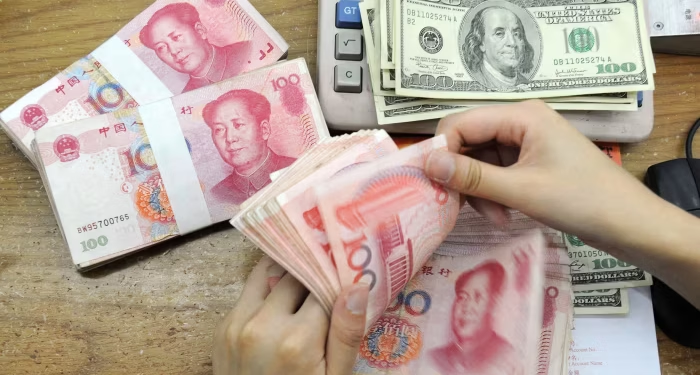In a significant development for global markets, the U.S. dollar maintained its upward trajectory while the Chinese yuan soared to a six-month high on Tuesday, following the announcement of a landmark trade agreement between the United States and China.
The deal, which marks a temporary de-escalation of the trade war between the world’s two largest economies, has ignited a wave of optimism across financial markets, with ripple effects felt from Wall Street to Asian exchanges.
This agreement, brokered after intense negotiations, signals a potential thaw in the economic standoff that has rattled investors and disrupted global supply chains for years.
The trade pact, finalized after weekend talks in Geneva led by U.S. Treasury Secretary Scott Bessent and Trade Representative Jamieson Greer, includes a coordinated 90-day tariff reduction. The U.S. agreed to slash its levies on Chinese imports from a punishing 145% to 30%, while China reciprocated by cutting duties from 125% to 10%.
This dramatic rollback, described by analysts as surpassing expectations, has eased fears of a deepening trade war that could have tipped the global economy into recession. The agreement, however, is not a permanent resolution but a truce, with both sides committing to further negotiations to address longstanding issues such as trade deficits, intellectual property rights, and market access.
The dollar, which surged on Monday following the initial announcement, retreated slightly but held onto most of its gains, with the dollar index hovering near a one-month high of 101.6. This reflects renewed investor confidence in the U.S. economy, bolstered by the prospect of reduced trade tensions and a potential boost to American exports.
Meanwhile, the Chinese yuan scaled a six-month peak, reaching 7.1855 against the dollar in offshore trading, a 0.52% increase from Monday’s close. This rally in the yuan also lifted currencies like the Australian and New Zealand dollars, which rose 0.64% to $0.6412 and 0.55% to $0.5889, respectively, as they are often used as proxies for yuan movements due to their trade linkages with China.
Global markets reacted with enthusiasm to the news. Wall Street saw a robust rally, with the S&P 500 climbing over 3% and the Nasdaq 100 entering bull market territory, driven by gains in big tech stocks.
The trade deal has also had broader geopolitical and economic implications. In South Asia, the Indian rupee is expected to appreciate past the 85 mark against the dollar, supported not only by the yuan’s rally but also by a separate India-Pakistan truce that has further bolstered regional market sentiment.
WHAT YOU SHOULD KNOW
As markets digest the implications of this pact, the focus now shifts to the upcoming 90-day negotiation period.
Key questions remain: Can the U.S. and China sustain this momentum to forge a lasting agreement?
Will other trading partners, such as the European Union or Japan, seek similar deals to avoid being sidelined?
And how will central banks, particularly the Federal Reserve and the People’s Bank of China, adjust their policies in response to shifting economic dynamics?
For now, the dollar’s resilience and the yuan’s surge underscore a moment of cautious optimism in the global markets.
ALSO READ TOP STORIES FROM VERILY NEWS


















